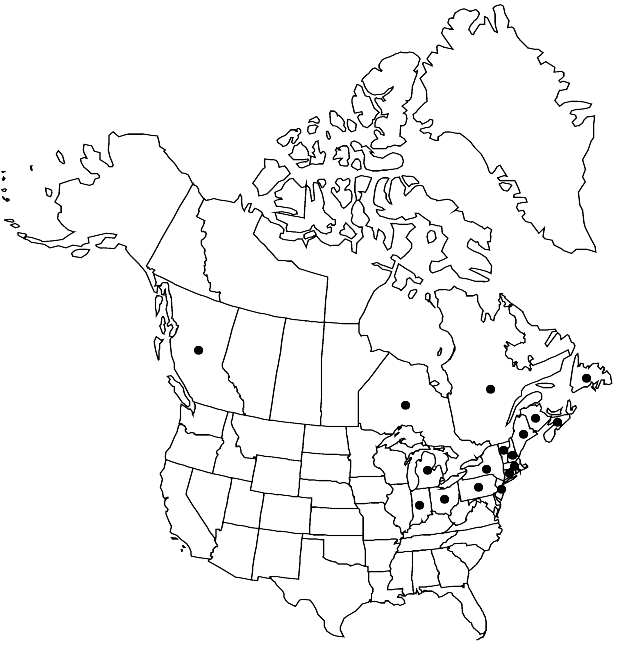Cardamine pratensis
Sp. Pl. 2: 656. 1753.
Perennials; usually glabrous, rarely sparsely pilose basally. Rhizomes cylindrical, (not fragile), relatively short, (not fleshy). Stems erect, unbranched, (0.8–)1.5–5.5(–8) dm. Rhizomal leaves simple or 5–9(–31)-foliolate, to 30 cm, (thin, veins raised), leaflets petiolulate or sessile; petiole (1–)2–7(–10) cm; lateral leaflets petiolulate or sessile, blade similar to terminal or smaller, orbicular, ovate, or obovate, margins crenate or repand; terminal leaflet (petiolule to 1.5 cm), blade orbicular or broadly obovate, 0.3–2 cm diam., base usually rounded, rarely subreniform or cuneate, margins repand, (apex rounded). Cauline leaves 2–12(–18), pinnatisect, petiolate, leaflets petiolulate or sessile, (2–17 cm including petiole, thin, veins raised); petiole base not auriculate; lobes or leaflets (4–7(–13) each side of rachis), petiolulate or sessile and decurrent, blade similar to terminal lobe or leaflet, margins usually entire, rarely dentate; terminal lobe or leaflet (petiolulate or sessile), blade linear, oblong, ovate, or lanceolate, 1–2.5(–3.5) cm × 5–8(–10) mm, (surfaces glabrous). Racemes ebracteate. Fruiting pedicels erect-ascending or subdivaricate, (5–)12–25(–30) mm. Flowers: sepals (erect or spreading), oblong or ovate, (2.5–)3–5(–6) × 1–2 mm, lateral pair saccate basally; petals usually purple or lilac, rarely white, obovate, (6–)8–15(–18) × 3–7.5(–10) mm, (clawed, apex rounded or emarginate); filaments: median pairs 5–10 mm, lateral pair 3–6 mm; anthers narrowly oblong, (0.8–)1.2–2 mm. Fruits linear, (1.6–)2.5–4.5(–5) cm × (1.2–)1.5–2.3 mm; ovules 20–30 per ovary; style (0.5–)1–2.2(–2.7) mm, (stout). Seeds light brown, oblong, 1.2–1.8(–2) × 1–1.4 mm. 2n = 16.
Phenology: Flowering May–Aug.
Habitat: Moist grounds, stream sides, limestone shores, sedge and grass meadows, marshy pond margins, mossy areas, wet hollows, boggy areas, turfy shores, damp creek banks, swamps, brooks and ditches, moist ravines, springy swales
Elevation: 0-1000 m
Distribution

B.C., N.B., Nfld. and Labr. (Nfld.), N.S., Ont., Que., Conn., Ind., Maine, Mass., Mich., N.H., N.J., N.Y., Ohio, Pa., Vt., Eurasia.
Discussion
The taxonomy of Cardamine pratensis in North America requires further detailed study. Most, if not all, populations of this species were introduced from Europe. Some specimens resemble the European C. dentata Schultes (high polyploid, characterized by all leaves, including distalmost, pinnate with petiolate and sometimes deciduous leaflets) and these populations might be native.
Selected References
None.